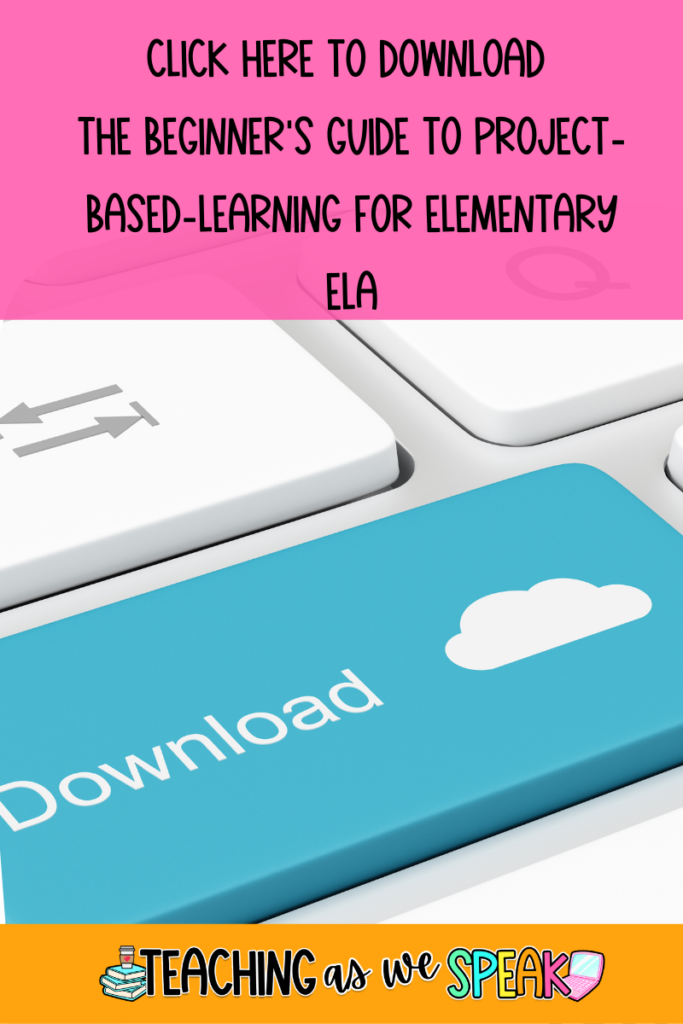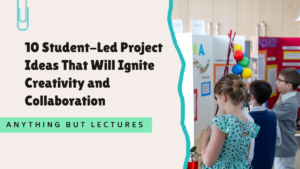It can seem daunting when first trying to implement project-based learning in your classroom. There are many challenges as a teacher using project-based learning Project-based learning for the first time. It isn’t something schools master in a matter of weeks or even months; it takes time.
Want the good news?
Being a good teacher, in general, takes a long time. The good news is, implementing PBL (project-based learning) will get you there a heck of a lot faster.
Keep reading if you want to read 3 challenges as a teacher using project-based learning in elementary ELA, as well as 3 solutions/tips to overcome these challenges. I want to help you become that rockstar teacher I know you can be!
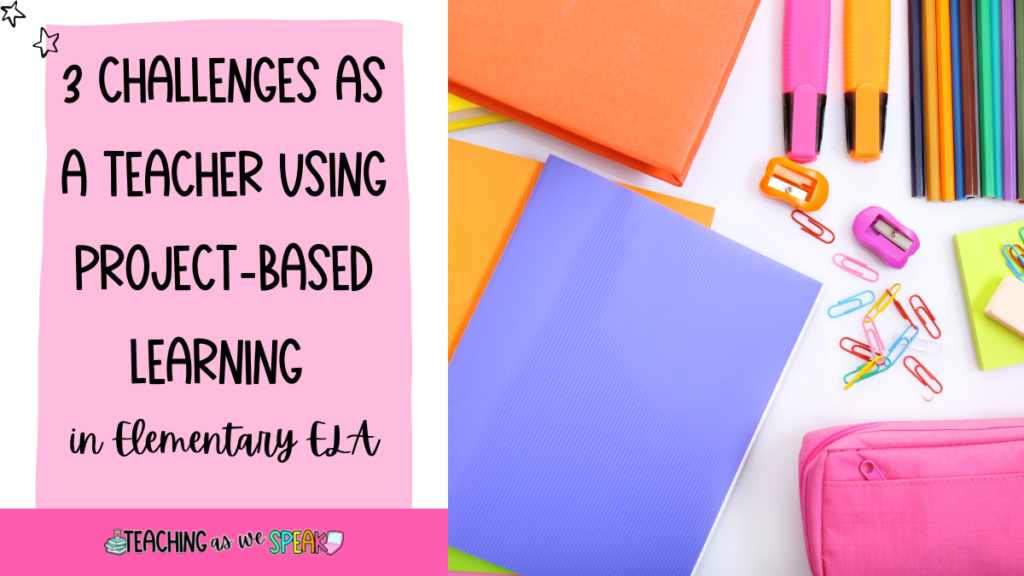
You can start by downloading my free Beginner’s Guide to Project-Based Learning in Elementary ELA. I include tips and helpful information, as well as a 2-week project on growth mindset to help you get started with PBL. Click here to download now!
#1 Challenge as a Teacher Using Project-Based Learning-”I don’t understand it”
Project-based learning is vastly different than the traditional education that most teachers are familiar with. The traditional instructional model looks something like this:
- The teacher teaches
- Guided practice with the students
- Independent practice by the students
PBL completes dismantles this, having the students doing throughout the lesson, rather than only at the end. That is why PBL is often referred to as student-centred. Additionally, PBL has students completing a project throughout the learning. This is different from the projects we as teachers did in school, at the end of a term or unit. In PBL the project is the term/unit.
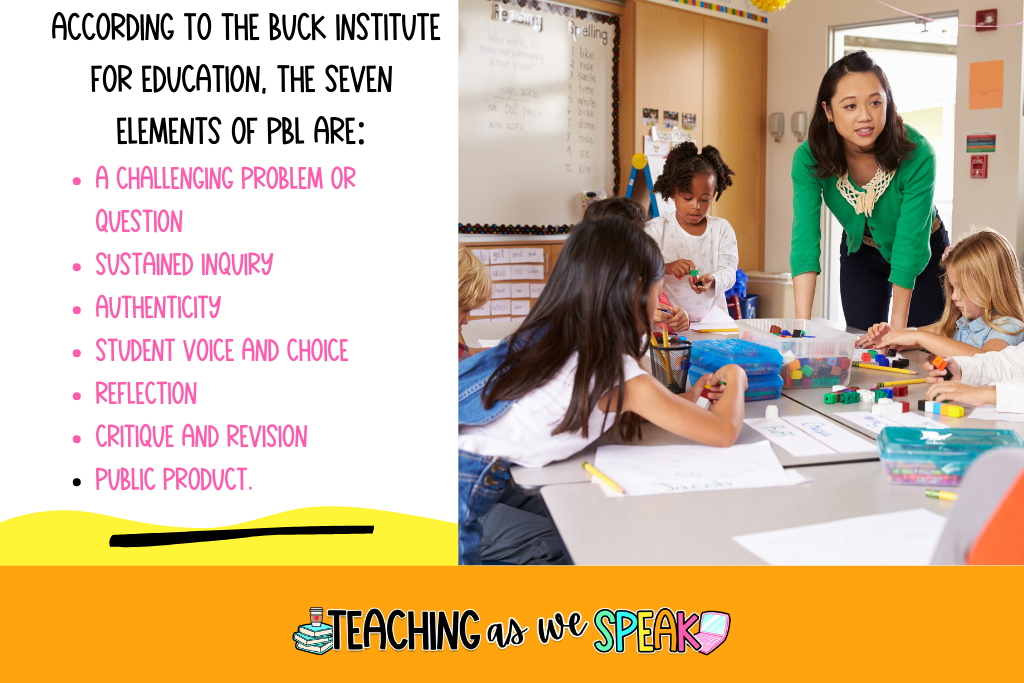
The Buck Institute for Education identified seven elements of PBL, focused on product design. Collectively these elements are called Gold Standard PBL.
The seven elements are:
- A challenging problem or question
- Sustained Inquiry
- Authenticity
- Student Voice and Choice
- Reflection
- Critique and Revision
- Public Product.
Click here to download the Beginner’s Guide to Project-Based Learning.
#2 “I don’t know where to start”
Ok, so you’ve done your research. You have a better understanding of PBL. Now what? It is a challenge as a teacher using project-based learning to know where to start when it comes to planning.
The best tip I can give you is to start small. You do not need to incorporate every element of PBL in your first project. You will learn as you go. I suggest a 2-week project to get started. The most important thing to do is create a project that has:
- A guiding question for students to explore
- Someting for the students to create that will help them explore an answer or answers to the question. This will be created throughout the
- An audience in mind that is effected by the question (and that students can present their project to)
- Time for students to provide and listen to feedback
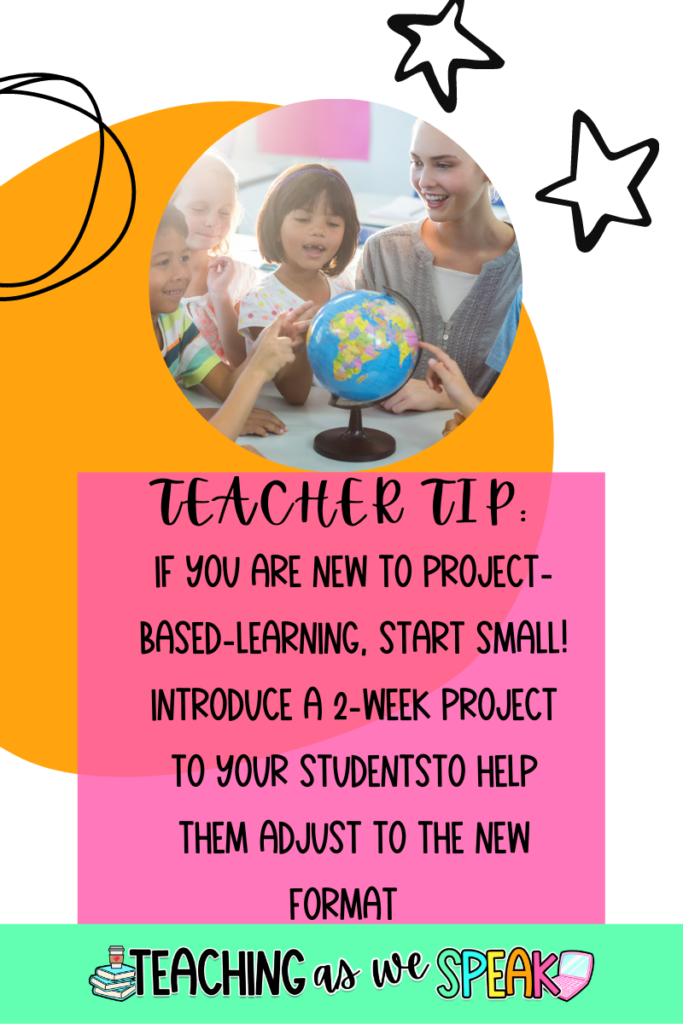
I wanted to create a project for teachers trying PBL for the first time. That’s why I created a 2-week project on growth mindset. This project is best suited for grades 4-6, however, elements can be adapted and used in any elementary grade. It is a part of my free Beginner’s Guide to Project-Based Learning. Click here to get it now!
#3 Challenge as a Teacher Using Project-Based Learning- “I don’t have any project ideas”
It can be quite daunting to look online at some project-based learning examples. They seem so creative and original. You may have this silly idea in your head that you are not a creative person and could never come up with cool ideas.
You’re wrong! You totally can! You just need to get out of the mindset of a traditional teacher and get into the brain of your students. What are they talking about at recess? What do they get excited about in class? Once you turn on your ears and are more mindful about what your students are talking about, the ideas will come.
I come up with my best, most creative ideas when I’m out for a walk, listening to a podcast. Or when I’m driving somewhere listening to the radio. My point being, you are not going to think of creative ideas when you’re at a desk, forcing yourself to think of ideas.
Students connect best with a topic when they can relate to it or when it’s something they’re familiar with. That’s why it’s a good idea to always have your ears and mind open to project ideas when you’re watching tv, listening to the radio or even scrolling on social media. This is where your students are hanging out, and therefore where your opportunities for student engagement are living.
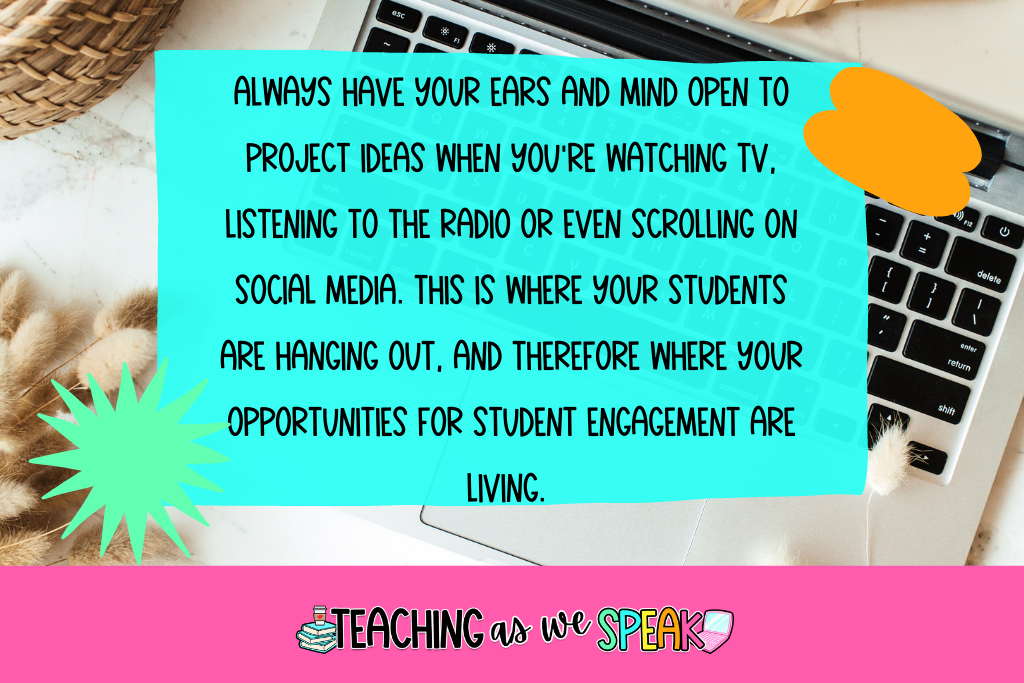
And then there’s always Google. You can also Google “ideas for project-based learning” and find thousands of ideas!
#4- “I Can’t Find Any Resources/Support”
In my own personal experience, I have struggled with finding PBL resources for elementary ELA. Most of the online project-based learning space online is taken up by STEM (science, technology, engineering and math).
However, PBL in the other subject areas is growing. Teachers like me who have a passion for PBL in elementary ELA are growing. This means that the number of resources that can be found online is increasing each day.
I don’t want you to feel alone. That’s why I made this Beginner’s Guide to Project-Based Learning in Elementary ELA just for you. Click here to get it now!
#5 Challenge as a Teacher Using Project-Based Learning- “It’s too different for me to get used to”
PBL can be difficult for some teachers to get used to, as it requires them to coach more and instruct less; to embrace interdisciplinary learning and to be more comfortable with chaos and discovery during the learning process.
I personally have struggled with this. Mainly because I’m a control freak who doesn’t like things out of order. PBL might seem messy at first. However, watching the student engagement in your class skyrocket makes the stress of mess disappear quickly.
My tip for you fellow control freaks out there is to go into it with an open mind. As long as you do frequent check-ins with each student, have behaviour management strategies in place and set the expectations right away, you and your students will grow together in the process.
Final Thoughts
While there are challenges as a teacher using project-based learning, I believe the positives outweigh the obstacles.
I hope that this post gave you some assurance that implementing PBL in your class is a good idea. Whether you were mandated to bring PBL to your class or chose to try it for yourself, I promise you that you will see a difference in your teaching and your students’ learning.
Don’t forget to grab your free copy of The Beginner’s Guide to Project-Based Learning before you go!


